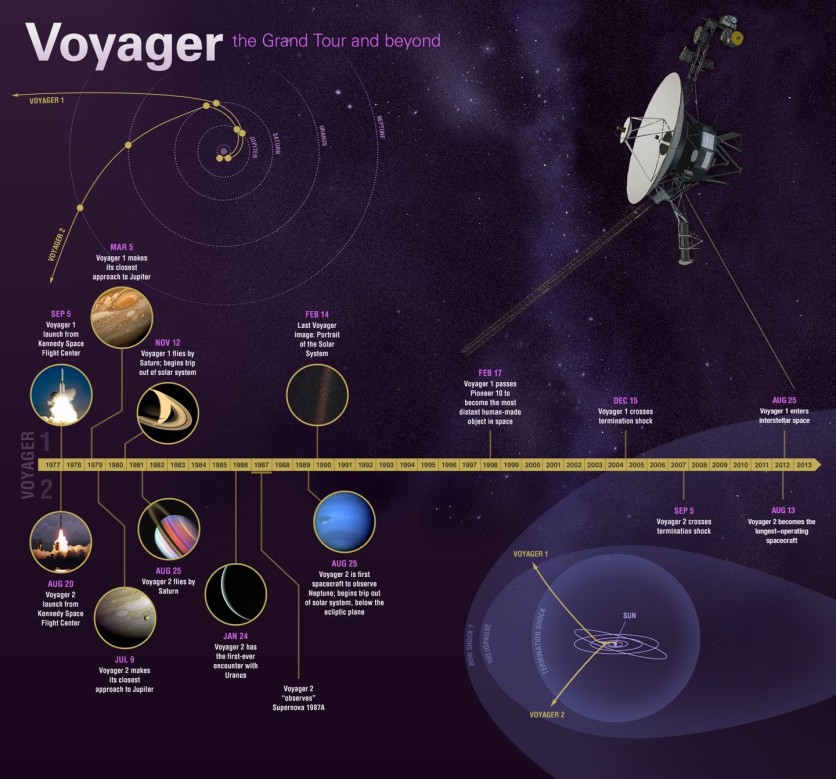NASA's twin Voyager probes, launched in 1977, awed the world with historic journeys to Jupiter, Saturn, Uranus, and Neptune.
But 45 years later, the probes continue their voyage as they travel through interstellar space, the area beyond our Sun's protective heliosphere.

Time Capsule in Different Eras
According to NASA, the twin Voyager probes have turned into time capsules for their era - each one carries an eight-track tape player for storing data, has about 3 million times less memory than contemporary smartphones, and transmits information at a rate that is about 38,000 times slower than a 5G internet connection.
However, the Voyagers are still at the forefront of space exploration. They are the only probes to have ever explored interstellar space, the cosmic ocean that our Sun and its planets sail through. They are currently managed and controlled by NASA's Jet Propulsion Laboratory in Southern California.
The heliosphere, a protective bubble produced by the magnetic field of the Sun and the outward passage of solar wind, houses the Sun and the planets.
Researchers are merging Voyager's observations with data from more recent missions to understand our Sun and how the heliosphere connects with interstellar space. Some of these researchers are younger than the two distant spacecraft, according to NASA.

Read also : NASA's James Webb Space Telescope Is Set To Capture Dazzling Clouds of Vaporized Gems On Distant Exoplanets
Cosmic Message In a Bottle
The Voyagers each have a golden record composed of music, nature sounds, greetings in several languages, and pictures of Earth life, as well as illustrations of fundamental scientific concepts.
For anyone who might come into contact with the space probes, the gold-coated records act as a cosmic "message in a bottle." The records will be preserved for more than a billion years at the rate at which gold corrodes in space and decays.
Voyager 1 was launched on September 5, after Voyager 2 on August 20, 1977. Voyager 1 arrived at Jupiter and Saturn before Voyager 2, which moved more quickly. The probes revealed a lot about the two largest planets and their moons in the solar system.
In 1986 and 1989, Voyager 2 became the first and only spacecraft to fly very near to Uranus and Neptune, providing Earth with unparalleled vistas and insights into these far-off planets.
"The Voyagers have continued to make amazing discoveries, inspiring a new generation of scientists and engineers," Suzanne Dodd, project manager for Voyager at JPL, said in a statement.
"We don't know how long the mission will continue, but we can be sure that the spacecraft will provide even more scientific surprises as they travel farther away from the Earth."
Related Article : NASA's Hubble Space Telescope Captures 'Orion Nebula's Dreamy Cloudscape' With Over 500 Exposures!
This article is owned by Tech Times
Written by Joaquin Victor Tacla
ⓒ 2025 TECHTIMES.com All rights reserved. Do not reproduce without permission.




